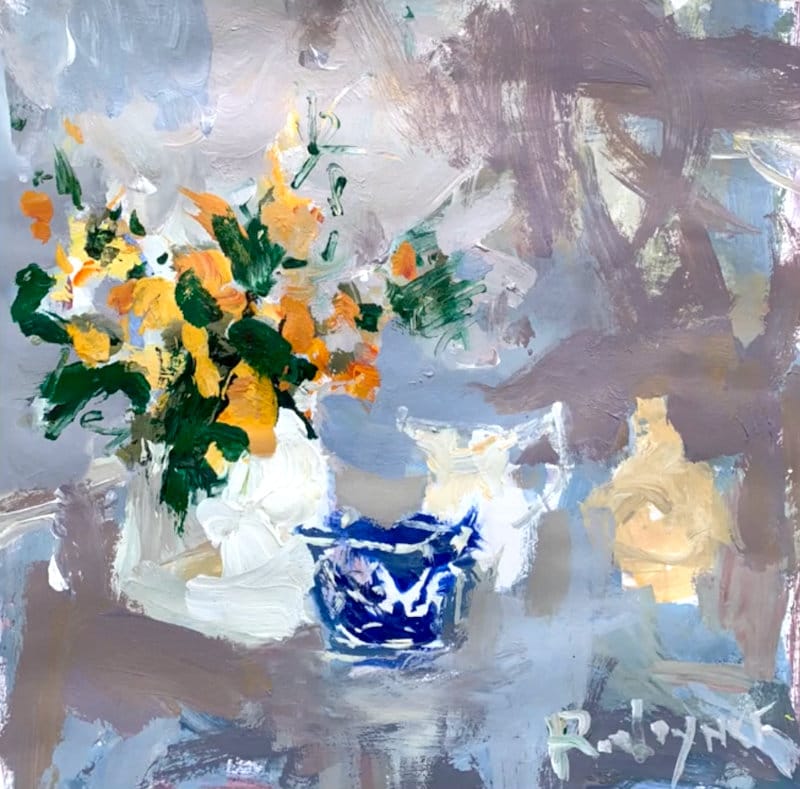Tips for Painterly Style Acrylic Still Life with Flowers
Finished art is a trap. In this tutorial, you’ll learn how to paint loose, expressive acrylic flowers without chasing perfection — just discoveries, bold strokes, and garage-approved fun.

Before we dive into tips for painterly style flowers using fast drying acrylics, here’s a quick nugget: finished art is a trap.
When you chase polish, you tense up. You measure success only by how pretty the result looks. But real growth? That lives in the messy stuff — the playful strokes, the rejects you tape to the wall, the ones that fail more often than they work.
So in this lesson, loosen up. Don’t aim for perfect, or trying to copy my work, aim for discoveries. That’s where the true garage-artist magic kicks in.
Now let’s dig into painting loose, expressive flowers with acrylics — and yes, you’ll find the full 20-minute demo video below.

Learn & Improve Your Acrylic Skills
- Acrylic Hub– Your go-to guide for tutorials, tips, and resources.
- Subscribe for More Great Content - Get tutorials, tips, and updates straight to your inbox.
- Follow Me on Pinterest - Daily inspiration, tips, and fresh ideas.
Recommended Acrylic Painting Materials
-
Princeton Catalyst Brushes – Flats (#6, #12), Rounds (#4, #8), Fan (#4), Liner Brush
Durable synthetic bristles for versatile acrylic techniques -
Liquitex Heavy Body Acrylic Paint – Essential Colors
Cadmium Yellow, Yellow Ochre, Alizarin Crimson, Cadmium Red Light, Ultramarine Blue, Cobalt Blue, Burnt Sienna, Titanium White -
Winsor & Newton Cotton Canvas
Reliable stretched canvas for studio and plein air work -
Strathmore 400 Series Mixed Media Paper
Heavyweight, acid-free paper for acrylic and mixed media -
Fabriano Artistico 140lb Cold Press Paper
Excellent for acrylic, mixed media, and textured effects -
Blick Multi-Colored Painting Knife Set
Variety of shapes for texture, scraping, and bold strokes - Miscellaneous: Two pint-sized water containers, paper towels (from Home Depot or Walmart)
- Note: I use canvas or sturdy cardboard as my palette — no store-bought palettes needed.




